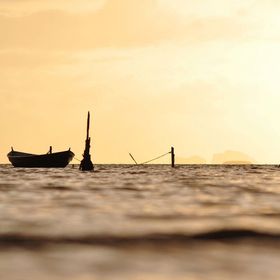East side of Honolulu, this is a very fickle spot when it comes to astrophotography. There is usually a very small window of time right after sunset before clo...
Read more
East side of Honolulu, this is a very fickle spot when it comes to astrophotography. There is usually a very small window of time right after sunset before clouds start forming and cover up the stars. I was lucky this night.
Read less
Read less
Views
272
Likes
Awards
Winter Award 2020
Peer Award
Absolute Masterpiece
Top Choice
Magnificent Capture
All Star
Virtuoso
Superb Composition
Superior Skill
Outstanding Creativity
Top Ranks
Same photographer See allBehind The Lens
Behind The Lens
Location
This was shot on the east side of Oahu, Hawaii at Sandy Beach Park. This park is a very popular spot for surfing and fishing and just generally hanging out at the beach. I've pretty much grown in the waves here so very familiar with all of Sandy Beach's personalities.Time
This was shot shortly after the sunset during the fall. This time of the year the Milky Way can be shot in a vertical position early in the evening. This was shot in October between around 730 and 8pm, roughly around 90 minutes after the sun went below the horizon. One other thing about this stretch on the east side is because of the almost year round, east to west direction tradewinds, there are usually a lot of cloud cover from the cool ocean air hitting land. There is usually a very short window of time after sunset that cloud formations decrease, I tried for 6 weekends in a row before I got a decent stretch of time to shoot while the Milky Way was vertical in the sky.Lighting
Optimally you’d want very dark skies with little light pollution for astro photography, unfortunately this park is in Honolulu which is the most densely population city in the state. This area is classified as a 5 on the Bortle scale but fortunately I’m shooting into the ocean which is a bit darker at a Bortle Class 4.Equipment
I used a Canon EOS R with a Canon 14mm 2.8L Mk I. The tripod I'm using is a Manfrotto 190xB with a Manfrotto 486RC2 ball head and I'm also using a Canon TC-80N3 intervalometer so I can take multiple exposures with the same settings. The camera was set to f/2.8, at 14mm, iso 2000, and 20 seconds per frame.Inspiration
I've always been fascinated with astro photography but have only been learning to shoot the stars over the last 2 years or so, there is just something so magnificent and awe-inspiring about the night sky. I'm pretty much always photographing alone and being out in the quiet, whether it be an rugged coastline or a star filled sky, really evokes the feeling of just how small of a part we all are in the universe.Editing
This image was created from a stack of 26 images. Stacking multiple images really helps capture more the faint stars and really helps with noise since you're usually shooting at a high iso level, the stacking software I use is Starry Landscape Stacker which is for Mac computers, I know a lot of Windows users use the Sequator program which lucky for you folks is free. For the rest of the editing I used Lightroom and Photoshop.In my camera bag
I now travel as light as possible, my back just can't handle carrying around a heavy load anymore. In my bag...camera body, two lenses (usually my 14mm prime and a 24-105), some filters, an intervalometer and some cleaning cloths, spare storage cards and a spare battery. I use a Think Tank Change Up V2.0, I like how the weight is evenly distributed and it buckles around my waist as well as over my shoulder. This bag is also easy to swing around to the front of my body when I need to get something out of it, I don’t have to remove it to do that.Feedback
There a many tutorials on how to capture the Milky Way as well as how to edit the Milky Way. Like any other learning process, it really takes trial and error. A few thoughts on Milky Way shooting...a major thing that you should keep in mind is planning. You really want to research for the times when the Milky Way is going to be visible and where it will be positioned in the night sky. Also researching areas that will have less light pollution is another key. It would really be a good idea to scout out your planned location during the day prior to going out at night. I use an iPhone app called SkyView Lite (free) which will show me the locations of constellations at any given time of the day, the app is also very helpful in knowing what time the moon will be above the horizon if you're not shooting in a new moon phase. BUT, above all else, just have the comfort in knowing you're learning something new, have patience with it and just enjoy being out in nature.





























